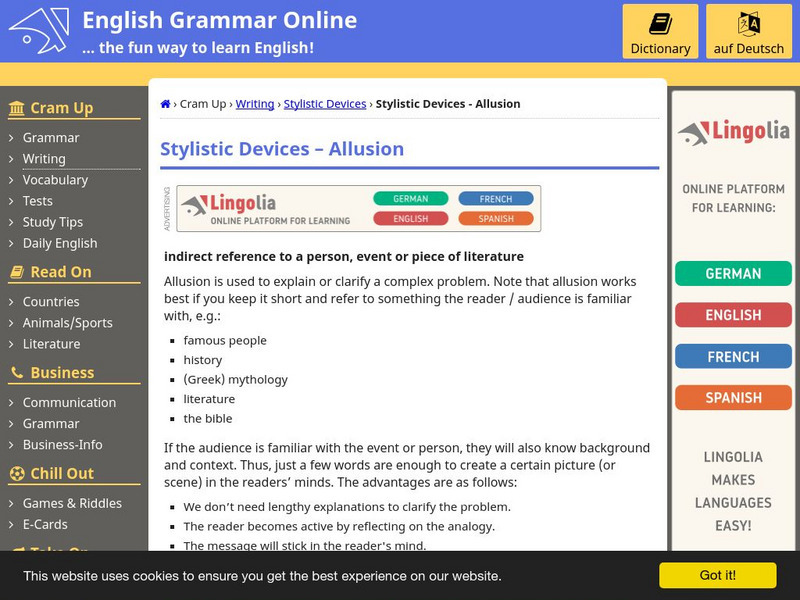Texas Education Agency
Texas Gateway: Denotation and Connotation (English I Reading)
Distinguish between the denotative (dictionary) meaning of a word and its connotative (emotions or associations that are implied rather than literal) meaning. L.9-10.5b nuances
Love To Know Media
Your Dictionary: Literary Terms to Know in Seventh Grade
This site lists and briefly defines the literary terms 7th graders should know including types of writing, literary devices, sound devices, figurative language, and parts of a story,
Department of Defense
Do Dea: Thinking Skills
In this self-guided course, you will be looking at several pieces of literature in many different forms. This unit will teach you some principles of thinking and learning and how to use basic literary terms in the analysis of literature....
Other
Smart Words: Famous Idioms and Meaning
This is a list of the 50 most commonly used idioms and their meanings.
Other
University of North Carolina: Glossary of Literary Terms
This site is provided for by the University of North Carolina at Pembroke. Over forty literary terms defined by college students, each with thorough examples.
Quizlet
Quizlet: Literary Elements/humorous Fiction Terms Flashcards
Literary elements are included in this review exercise. Flashcards are provided for the following words: allusion, antagonist, dialogue, flashback, imagery, protagonist, symbol, dialect, hyperbole, idiom, irony, parody, pun, sarcasm,...
Bartleby
Bartleby.com: Strunk's Elements of Style: Words and Expressions Commonly Misused
Common misused words are defined. Examples of how to use them correctly are provided. Some examples are "all right" to "would", "as good or better than", and "as to whether."
PBS
Pbs Learning Media: Literary Elements and Techniques: Tone and Mood
Explore the difference between tone and mood in this animated video [2:28] from WNET through definitions and examples from poetry and prose. Discussion questions below help students to further apply their understanding before analyzing a...
Quizlet
Quizlet: Flashcards: Figurative Language Level 1
Practice learning figurative language using these audio-enabled flashcards with literary terms and their definitions. Also provided is a list of terms and definitions (audio available) and links to games and a test. Java is required....
Ted Nellen
Cyber English (By Ted Nellen): Negative Capability
This is a glossary entry for the term "Negative Capability" including the definition and a link to an example.
Ted Nellen
Cyber English (By Ted Nellen): Setting
This is a glossary entry for the term "Setting," the time and place a story takes place.
Ted Nellen
Cyber English (By Ted Nellen): Symbol
This is a glossary entry for the term "Symbol" including definitions and examples.
Houghton Mifflin Harcourt
Holt, Rinehart and Winston: Elements of Literature: Imagery Chart [Pdf]
A short graphic organizer for students in studying the literary element of imagery. Includes a definition and chart with five sections with examples, one for each of the senses.
Other
English Grammar Online: Stylistic Devices: Allusion
If you need a brief, clear explanation of allusion and how it works, this is a good place to start.
Road to Grammar
Road to Grammar: Describing Weather
Lean twenty-two words to use when describing the weather by reading short passages and using context clues to define weather related vocabulary words.
TES Global
Blendspace: Figurative Language
A forty-six part learning module including links to informational texts, videos, pictures, practice exercises and more on various types of figurative language such as simile, metaphor, personification, idiom, alliteration, hyperbole, and...
TES Global
Blendspace: La Figurative Language: Alliteration
A six-part learning module with images, charts, and videos filled with explanations and examples of alliteration.
TES Global
Blendspace: Reading Assessment Terms
A learning module that includes ten links to videos, websites, and assessments that review literary terms such as poetic devices, figurative language, literary elements, literary terms, and more.
TES Global
Blendspace: Gallagher Figurative Language
A learning module with thirty-one links to images, texts, websites, and videos to on figurative language including simile, metaphor, personification, idiom, alliteration, hyperbole, and onomatopoeia.
TES Global
Blendspace: Figurative Language
A ten-part learning module with links to videos, websites, texts, and a quiz on figurative language simile, metaphor, idiom, cliche, symbolism, and more.
TES Global
Blendspace: Literary Devices
A learning module with eighteen links to videos and images to use when learning about literary devices including simile, metaphor, personification, onomatopoeia, hyperbole, and alliteration.
TES Global
Blendspace: Figurative Language 6th Grade
A seven-part learning module with links to websites, videos, and a chart about figurative language including simile, metaphor, alliteration, hyperbole, anthropomorphism, and idiom.
ClassFlow
Class Flow: Proverbs
[Free Registration/Login Required] In this flipchart the student identifies the characteristics of various genres and produces evidence of reading that responds to and analyzes the effects of sound, figurative language, and graphics in...
ClassFlow
Class Flow: Six Traits Word Choice
[Free Registration/Login Required] Comprehensive flipchart using a number of Activstudio tools to allow students to discover and illustrate words in their writings. Students can paint pictures with their word choice and descriptive words...


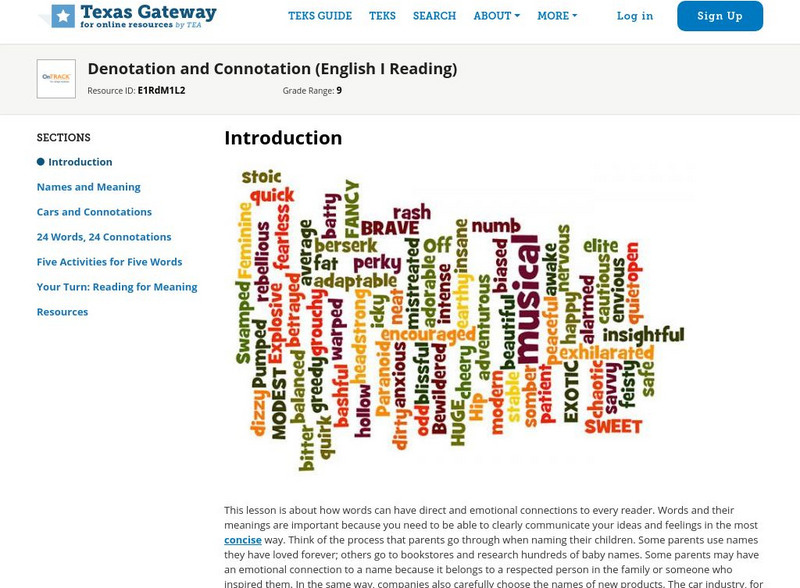
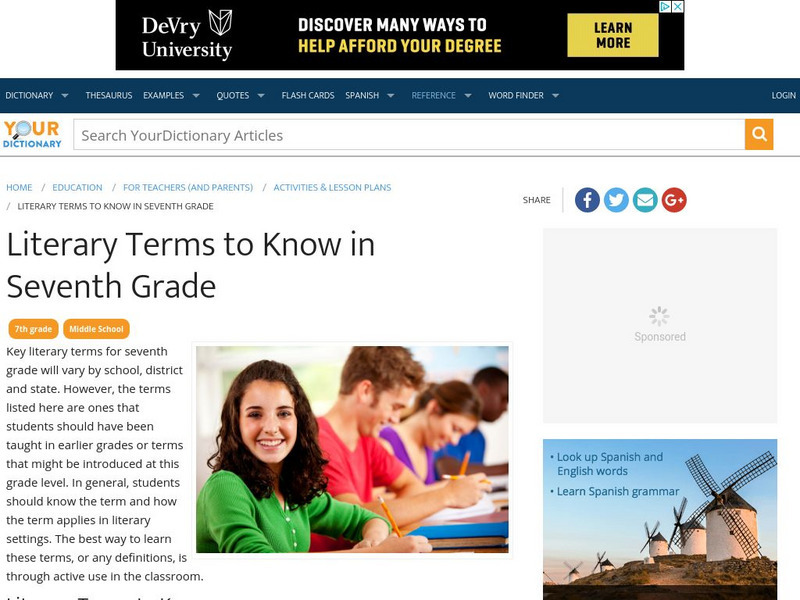
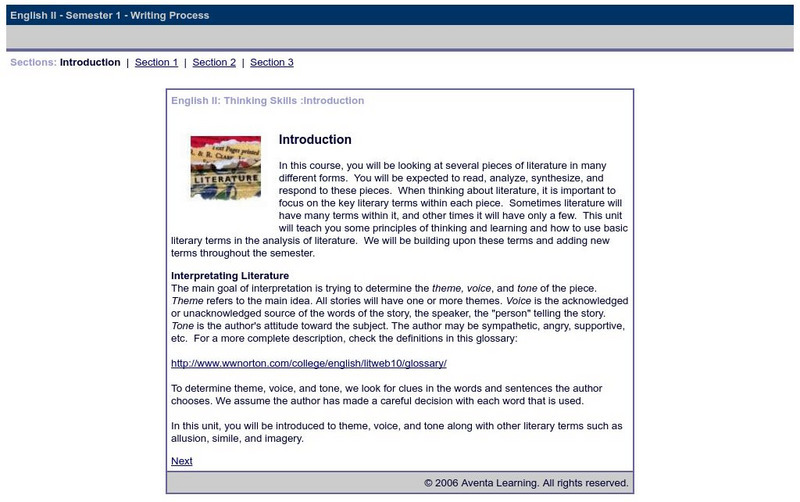
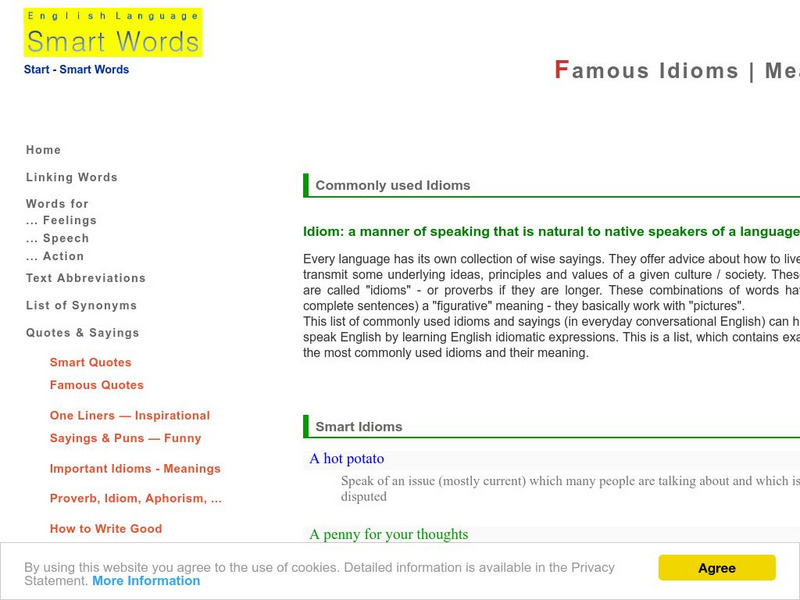



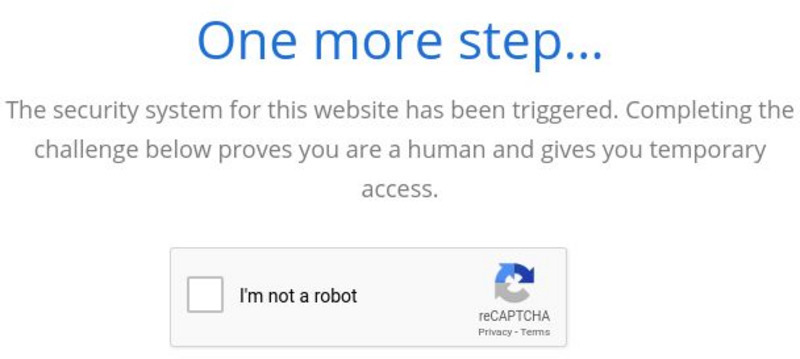



![Holt, Rinehart and Winston: Elements of Literature: Imagery Chart [Pdf] Graphic Holt, Rinehart and Winston: Elements of Literature: Imagery Chart [Pdf] Graphic](http://content.lessonplanet.com/resources/thumbnails/410053/large/bwluav9tywdpy2symdiwmduymc03nzuwlw5iazfsby5qcgc.jpg?1589985125)
